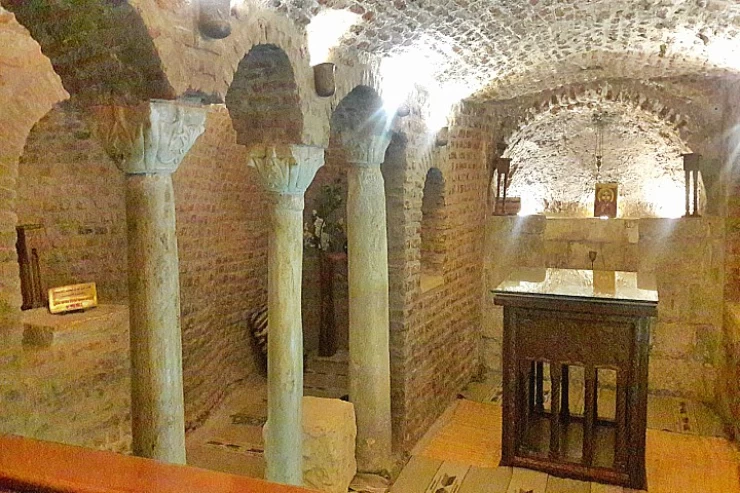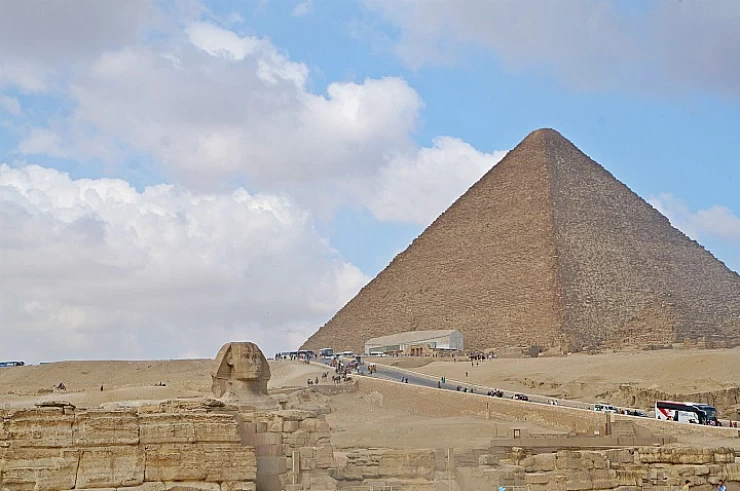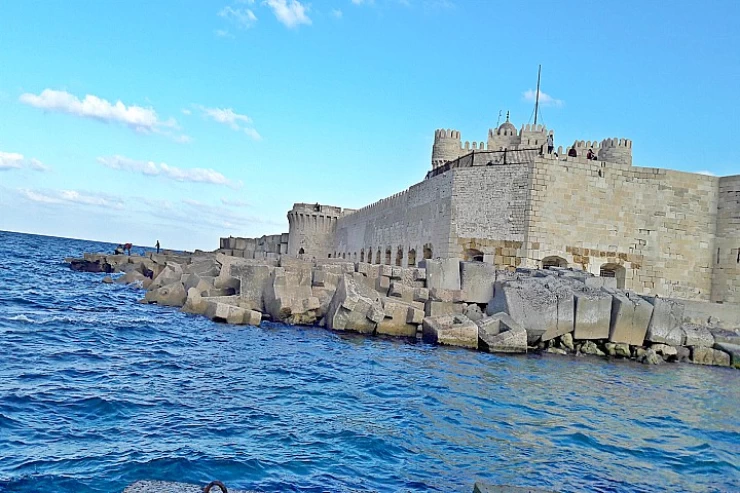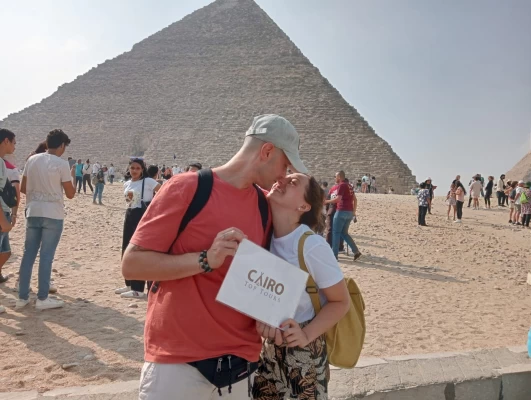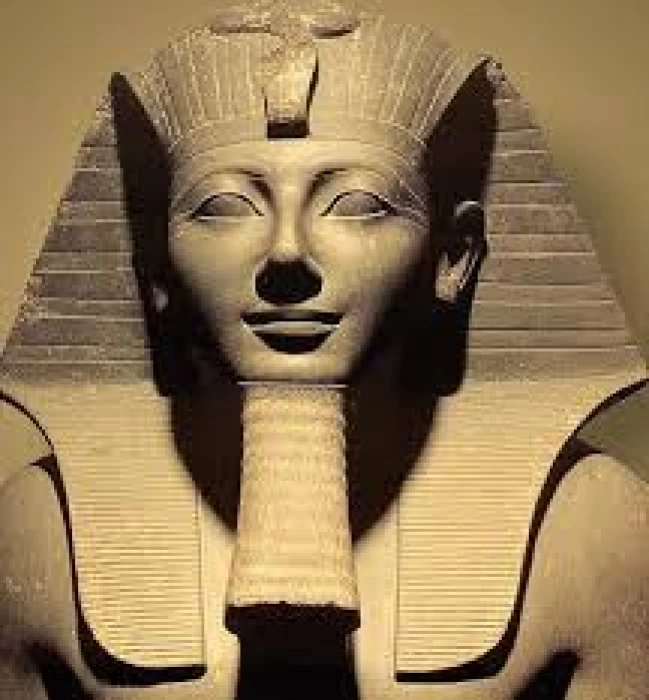
Re Thutmosi III | Tuthmosis il terzo
Re Thutmose III
Thutmose è una forma anglicizzata dell'antico nome egizio dhwty-ms, che significa "Nato dal dio Thoth". Le varianti includono Thutmoses, Tuthmose, Thothmes, Tuthmosis, Thutmes, Dhutmose, Djhutmose e Djehutymes.
Durante lo splendido regno ventennale di Queen Hatshepsut, Thutmosis III si dedicò agli affari militari come co-agente dopo la morte del padre Thutmosis II, senza alcun apparente disaccordo con la matrigna. Per questo motivo era difficile comprendere i motivi che successivamente lo portarono a cancellare la memoria della regina. Forse assomigliava a Hatshepsut nel desiderio di dare il massimo risalto alle sue attività.
Tutmosis III è generalmente considerato uno dei più grandi leader e strateghi della storia egiziana "il Napoleone egiziano". Durante il suo lungo regno, condusse innumerevoli campagne militari dalla Siria, all'Eufrate, alla Nubia. notevole anche la sua attività di costruzione. Alcune iscrizioni ne lodano la straordinaria forza fisica, era capace di colpire un bersaglio metallico con un arco, spesso un palmo, e passarlo da una parte all'altra. Alla fine dei suoi 54 anni di regno, gli successe il figlio Amenofi II.
Bellissima la sua tomba, scavata in una gola molto profonda e inaccessibile (e quindi poco frequentata dai turisti in visita alla Valle dei Re). La tomba è firmata kv34 ed è in ottimo stato di conservazione. La pianta della tomba è a forma di cartiglio, probabilmente un omaggio al dio Thot a cui il nostro faraone ha preso il nome.
Come gli altri faraoni del nuovo regno, Tuthmosis III fu un grande costruttore, arricchì il Tempio di Karnak con numerose statue e obelischi.
Decorato il tempio con la cosiddetta sala delle feste di Karnak dove oltre alla famosa Camera degli Antenati troviamo quella denominata Giardino Botanico dove sono rappresentate ed elencate le specie animali e vegetali che il re aveva portato dalla Siria. Sfortunatamente, come la maggior parte dei suoi predecessori, ha fatto uso di materiale preesistente per i nuovi edifici e utilizzato per cancellare ogni segno dell'odiata regina Hatshepsut.
Era stato sepolto in una magnifica tomba nella Valle dei Re non meno di valore artistico e architettonico delle famose attrazioni che si possono vedere durante il toure alle Piramidi Di Giza che è sicurament bellissimo.
Esplora le varie conquiste architettoniche di Thutmosis il terzo attraverso una serie dei Viaggi ed Escursioni in Luxor , Egypt Nile River Cruise Tours pubblicati sul sito web Cairo Top Tours che ti portano a visitare i templi di Luxor e le affascinanti tombe nella valle dei re, inclusa la tomba incredibilmente conservata di sua maestà durante la varietà di tour in Egitto e pacchetti di viaggio in Egitto, nonché molti gruppi guidati privatamente di tour giornalieri in Egitto.se il tuo pacchetto turistico in Egitto include alcuni giorni da trascorrere qui al Cairo, puoi fare uno dei tour completi del Cairo Day che vola a Luxor dail
Amenofi II, figlio di Thutmose III, succedette al padre nel 1438, portando avanti la politica espansionistica del padre e sedando due rivolte in Asia. Quando il Re è morto aveva 82 anni, dopo un regno che ha durato 54 anni, E è ststo sopelto in una tompe nelle Valle dei Re, che si considera tra i primi Re che hanno fatto le tombe per se stesso, e la sua tombe è stata scoperta nel 1898, dal scienziato Victor Loret, e anche ha scoperto che la tombe è stata rubata, e non si troveva il corpo del Re.
Thutmose is an anglicized form of the ancient Egyptian name dhwty-ms, meaning "Born of the god Thoth." Variations include Thutmoses, Tuthmose, Thothmes, Tuthmosis, Thutmes, Dhutmose, Djhutmose, and Djehutymes.
During the splendid twenty-year reign of Hatshepsut, King Thutmosis III devoted himself to military affairs as a co-agent after the death of his father Thutmosis II, without any apparent disagreement with his stepmother. For this reason, it was difficult to understand the reasons that subsequently led him to erase the memory of the queen. Perhaps, he resembled Hatshepsut in the desire to give maximum prominence to his businesses.
Tutmosis III is generally considered one of the greatest leaders and strategists of Egyptian history "the Egyptian Napoleon". During his long reign, he conducted countless military campaigns from Syria, to the Euphrates, to Nubia. his construction activity is remarkable as well. Some inscriptions praise their extraordinary physical strength, he was capable of hitting a metal target with a bow, often a palm, and passing it from side to side. At the end of his 54-year reign, he was succeeded by his son Amenophis II.
His tomb is beautiful, dug in a very deep and inaccessible gorge (and therefore not very frequently visited by tourists visiting the Valley of the Kings). The tomb is signed kv34 and is in an excellent state of conservation. The plan of the tomb is in the shape of a cartouche, probably a tribute to the god Thoth to whom our pharaoh took its name.
The temple with the so-called festival hall of Karnak where in addition to the famous Chamber of Ancestors we find the one called the Botanical Garden where the animal and vegetable species that the king had brought from Syria are represented and listed. Unfortunately, like most of his predecessors, he made use of pre-existing material for new buildings and used it to erase any signs of the hated Queen Hatshepsut.







